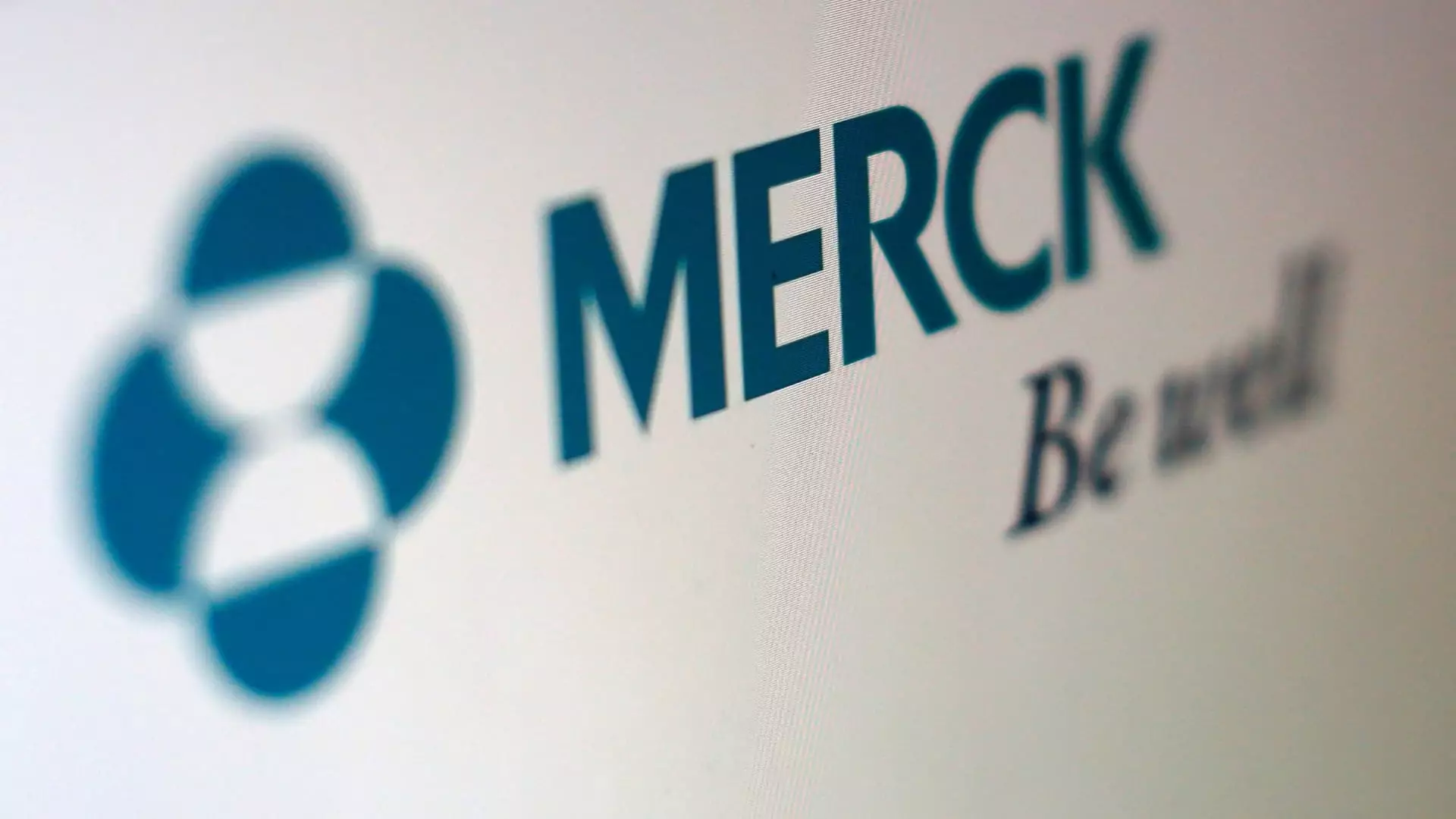This week, the Food and Drug Administration approved Merck’s novel treatment, Enflonsia, targeting respiratory syncytial virus (RSV) in infants. This event marks a critical milestone in combating a virus that significantly threatens the lives of our youngest citizens. The urgency surrounding RSV is palpable and justified, as it serves as a leading cause of hospitalization among newborns, alongside a notable number of fatalities each year. The introduction of Enflonsia could signal a shift in the paradigm for managing RSV outbreaks, particularly during the vulnerable fall-to-spring window when the virus flourishes.
Merck’s ambitious timeline indicates that shipments are expected to begin in July, providing timely access to this much-needed product before RSV season peaks. Behind this optimistic veneer, however, lies a complex dynamic of market competition and healthcare accessibility. The particular focus on infant health signals a humane commitment that the pharmaceutical industry must uphold. Nevertheless, awareness of market saturation and the pressing necessity for accessibility in healthcare is crucial as we proceed with excitement over this approval.
Complementary Options: Competing Rivals
With Enflonsia entering a competitive landscape against Sanofi and AstraZeneca’s Beyfortus, healthcare professionals are faced with new decisions in RSV management. Both treatments are monoclonal antibodies and deliver immediate protection, albeit through distinct mechanisms. While Merck champions the convenience of Enflonsia’s dosing—untethered to an infant’s weight—as a selling point, it also raises concerns regarding the efficacy of treatments interacting within the same space.
Why is this competition pivotal? In healthcare, variety often means better care. However, the saturation of options can lead to confusion, particularly among caregivers lacking medical expertise. Thus, while competition is inherently valuable, simplifying choices for patients and healthcare providers must be a priority.
Shortage Woes: A Pattern of Demand
The specter of scarcity looms large over the market, as evidenced by the overwhelming demand for Beyfortus during its last run, which experienced nationwide shortages. Such logistical challenges highlight a systemic flaw in the healthcare supply chain, seemingly perpetually prepared for the “next big thing” while failing to meet existing needs consistently. Will Merck’s Enflonsia navigate this roadblock, or will healthcare continuity remain a tangled web of unmet potential?
For Merck, the challenge is alarming yet necessary; successfully fulfilling demand for Enflonsia while integrating it into the broader treatment ecosystem has the potential to demonstrate their commitment to public health. This incident could serve as a cautionary tale for pharmaceutical companies, emphasizing that demand forecast accuracy is not merely a business necessity but a cornerstone of patient trust.
Vaccines and Trials: The Uncertain Future
As patients breathe a sigh of relief with the news of new treatments, it’s essential to address the implications of trials paused by the FDA on other RSV vaccines. This sudden halt stresses the ongoing conundrum in progressive medicine: innovation must frequently grapple with safety concerns. Are we, as a society, poised to entrust our most precious population to experimental medicine? The suspension of trials demands vigilance and highlights the responsibility that rests on pharmaceutical shoulders.
It’s undeniably exciting that companies like Pfizer, GSK, and Moderna are entering the RSV arena; however, the anxiety surrounding industry practices emphasizes a pressing need for transparency. How can manufacturers reassure families that safety takes precedence? Until these essential conversations are had, progress may be impeded by legitimate public skepticism.
Future of Infant Health Care: Enhancing Impact
The approval of Enflonsia isn’t just a noteworthy achievement for Merck; it embodies a societal plea for more child-centric healthcare solutions. With the ability to prevent RSV hospitalizations—boasting reductions of over 84% in related hospitalizations from recent trials—this treatment emerges not merely as a product but as a beacon of hope.
However, it remains evident that while Enflonsia becomes available, continuous advocacy for accessible, innovative, and safe healthcare solutions tailored for our youngest should be the guiding ethos for all stakeholders. Balancing competition and collaboration will not only maximize efficacy against RSV but also foster a healthier future for our infants. If we can harness this moment effectively, we may just witness the dawn of a new era in pediatric healthcare.

